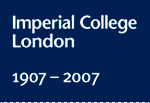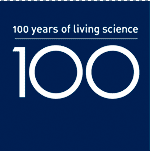Colleen Shilstone Richardson
(Electrical Engineering, 1919-46)
Colleen shares her story of her family's connection with Imperial for almost a Century
1911 –1955 encompasses my family’s attendance at this College as students.
My father, Frank Walter Shilstone (Civil Engineering 1914) and his brother, Arthur Bernard Shilstone (Barney) (Civil Engineering 1922) were both at Imperial College and studied engineering at the Guilds. My father (1892 – 1955) was at the City and Guilds in 1911 and was in his second year when Sir John Wolfe Barry became President of the Old Centralians in 1912. Sir John was the first Chairman of a Delegacy representing Imperial College, the City and Guilds Institute and the Goldsmiths’ Company.
After he was awarded his ACGI, my father became an officer in the Royal Artillery. He was mentioned in Dispatches in 1917 but later, was badly wounded in France, and had his right eye shot away. After the war he joined Kennedy and Donkin, Consulting Engineers, in Victoria Street. He was responsible for many schemes including designing and building a power station for Michael Nairn’s linoleum factory in Kirkcaldy. Later he had the job of linking all the power stations in the South West Area into one central power station.
Barney Shilstone took his degree in the Guilds after the Great War, as he joined up as a pilot in the Royal Flying Corp directly he was old enough.
I entered the City and Guilds College in 1945. My father took me to see the Dean, Professor Fortescue, during the summer and, providing I passed the entrance examination, I was to be accepted.
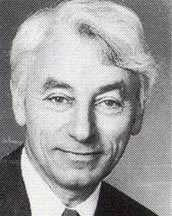 I became friendly with many of the Civil Engineering students, although I was in the Electrical Engineering Department. Several of them were ex-servicemen from the air force and the army. One was Alan Cotton Meigh ( Civil Engineering 1949, MSc 1950). He did research under Professor Pippard in Foundation Engineering and ended up working for Ove Arap and Partners. There was also someone called ‘Rusty’. I think his name was Walter Redlich (Civil engineering 1947, DIC 1949). He was a great social asset to the Guilds. In my year also was Eric Ash (Electrical Engineering 1948, PhD 1952), also in the Electrical Engineering Department, who went on to become Rector of Imperial College in 1985 until 1993.
I became friendly with many of the Civil Engineering students, although I was in the Electrical Engineering Department. Several of them were ex-servicemen from the air force and the army. One was Alan Cotton Meigh ( Civil Engineering 1949, MSc 1950). He did research under Professor Pippard in Foundation Engineering and ended up working for Ove Arap and Partners. There was also someone called ‘Rusty’. I think his name was Walter Redlich (Civil engineering 1947, DIC 1949). He was a great social asset to the Guilds. In my year also was Eric Ash (Electrical Engineering 1948, PhD 1952), also in the Electrical Engineering Department, who went on to become Rector of Imperial College in 1985 until 1993.
One of the highlights was the Imperial College Ball held in the Albert Hall in October 1945. George V1 and Queen Elizabeth were the chief guests and although one of the reasons was to raise funds for the development of Imperial College, it was also the Centenary year for the Royal College of Science. The Guilds, too, were involved in the celebrations as it was sixty years since its first full-time courses, in February 1885, were started in Exhibition Road. I remember the Ball very well, as not only was it great fun, but my partner and I were able to dance very near to the King and Queen.
The President of the City & Guilds at that time was a very energetic Colin Harris (Civil Engineering 1945). I think we met at the Dramatic Society where we put on The Alchemist to a supportive audience of friends and relatives. I think I was the Dol Common character.
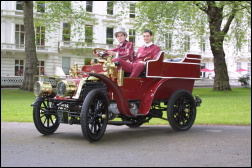 The following year Boenerges (Sons of Thunder- the surname of James and John the sons of Zebedee) was brought back into action. It had been the motorized mascot and the pride and joy of the City and Guilds students since 1934. It was a 1902 James and Browne car and took part regularly in the London to Brighton run. During the war it had been kept safely in Hertfordshire at the home of Joe Pidgeon (Mechanical Engineering 1940) who was Bo’s first driver.
The following year Boenerges (Sons of Thunder- the surname of James and John the sons of Zebedee) was brought back into action. It had been the motorized mascot and the pride and joy of the City and Guilds students since 1934. It was a 1902 James and Browne car and took part regularly in the London to Brighton run. During the war it had been kept safely in Hertfordshire at the home of Joe Pidgeon (Mechanical Engineering 1940) who was Bo’s first driver.
Earlier that year I had splashed out and bought a 1927 Armstrong Siddeley Tourer 15 HP for £25 from a farmer in Reigate. I was thrilled to have a car of my own, and was happy to be challenged in that it had a gate change gearbox, which I managed very well. One day I drove this enormous machine to South Kensington and parked it in Imperial College Road, hoping to astonish all my student buddies. Imagine my chagrin to see an excited crowd round the C&G mascot – BO - that was making its first appearance after six long years.
Nobody even looked at MY car.
Someone who was very kind to me was Professor Hyman Levy, a really human mathematician. In those days we had to go across Exhibition Road for his lectures, which he delivered with patience and great clarity. I know, though, that he did not have any great faith in the mathematical ability of either the RSM or the City and Guilds College students.
My husband, Harry Richardson (Physics 1946, DIC Aeronautics 1947), was also at Imperial College. One of his very close friends was a Spaniard called Rafael Armenteros (Physics 1946), who sadly died in 2004. We thought him very glamorous as he had fought in the Spanish war but he also went on to become well-known for some of CERN’s most famous experiments – the bubble chamber experiments. Another of his friends was Harry Stopes-Roe (Physics 1944). His mother was the awesome pioneer of birth control – Marie Stopes. Susie Korn (Physics 1949) was also in the Physics department at that time. She was lucky enough to have a room in the residence at Beit Quad adjacent to the Union and she gave marvellous parties.
Harry and I were already married by the time I entered Imperial College and for the year we over-lapped, we decided to say we were cousins. We did not want people to think us ‘odd’ to be married students. Harry went on to become a lecturer at University College (UCL) and was one of Professor Sir Harrie Massey’s research team in the Department of Mathematics. He became friendly there with Robert Boyd (Electrical Engineering 1943) also from Imperial College. R.L.F. Boyd was to become director of Mullard Space Science Laboratory that opened on 3 May 1967. Harry went on to join the Atomic Energy Authority where he was in the forefront of nuclear power station design. Harry’s final job was working for Shell International.
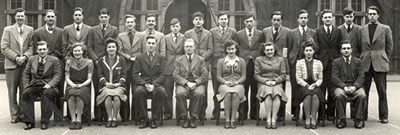 My year had many people that I was to meet again in later years. There was Peter Justesen (Chemical Engineering 1946) – a member of Imperial College Hockey Club with me. Much later, in 1993, Peter became Hon. Secretary of the CGCA until his sad death in 2003 from a tragic accident on the tennis court. John Le Sueur (Civil Engineering 1947), also a member of the Hockey Club, was a bright social spark in the Guilds fraternity. (Photo: Imperial College Hockey Club, 1945-46 Back Row: J. Le Sueur, L. A. Stredwick, H. Riley, J. W. Holloway, P. A. Champness, J. C. Louw, D. A. Dent, C. J. Petheram, H. V. Beckett, A. S. Marsters, A. A. Isaacs, G. A. Boller, A. J. G. Allan, S. E. Churchfield, H. W. Acteson
My year had many people that I was to meet again in later years. There was Peter Justesen (Chemical Engineering 1946) – a member of Imperial College Hockey Club with me. Much later, in 1993, Peter became Hon. Secretary of the CGCA until his sad death in 2003 from a tragic accident on the tennis court. John Le Sueur (Civil Engineering 1947), also a member of the Hockey Club, was a bright social spark in the Guilds fraternity. (Photo: Imperial College Hockey Club, 1945-46 Back Row: J. Le Sueur, L. A. Stredwick, H. Riley, J. W. Holloway, P. A. Champness, J. C. Louw, D. A. Dent, C. J. Petheram, H. V. Beckett, A. S. Marsters, A. A. Isaacs, G. A. Boller, A. J. G. Allan, S. E. Churchfield, H. W. Acteson
Front Row: A. B. Harman, B. M. Elridge, R. A. Hopkins, P. J. Justesen, A. Stephenson, J. E. Parker, J. Bridges, C. D. Shilstone (Colleen), J. C. Heywood
Photo by ‘Wakefields Ealing 1000’)
My brother, Bruce Shilstone (Electrical Engineering 1955), was also at the Guilds in 1954. He was in the Department of Electrical Engineering along with Bruce Sayers (Electrical Engineering 1957), John Sheldon (Electrical Engineering 1957, DIC 1959) and Brian Dean (Electrical Engineering 1957, DIC 1958).
For my part, having forgotten all about this illustrious temple of learning, I was tempted back in 1993 by various interesting leaflets and a chance meeting with a Royal School of Mines Association member, Frank Cassidy (Mining Engineering 1931, Mining Geology 1932). I joined the City and Guilds College Association and a couple of years later the towering Rod Rhys Jones (Civil Engineering 1964) threw his black cloak over me and persuaded me to become editor of the CGCA journal –Imperial Engineer.
This was previously known as The Central and came into being in November 1903 when the engineers and science students were still sited at Finsbury Technical College. This was where the London Livery Companies first set up the Central Institution, whilst negotiations were going on at South Kensington to found Imperial College.
I enjoyed editing the journal and in so doing I was privileged to meet a great number of clever and dedicated people. During those eight years I was helped enormously by the sterling efforts of Adrian Winchester.
When the three original colleges were broken up into faculties, I approached John Bramley (Mineral Technology 1956, PhD 1959). He was the Hon. Secretary of the RSMA and also ran their four-page newsletter. “Shall we combine our publications?” I asked him. He was very interested and we set up a meeting with officers of the two Associations and the deed was done. We decided to call the new magazine Imperial Engineer and its first issue was in the Autumn of 2004.
Writing these flashbacks of memories, I realize that with all my family involvement, we have almost spanned the centenary years, one way or another, of Imperial College.
Further information about Imperial Engineer can be found at: http://www3.imperial.ac.uk/engineering/about/alumni/imperialengineer/
© 2007 Imperial College London
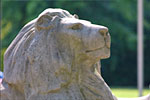
Through the first decade of the twenty-first century the campaign seeks to philanthropically raise £207 million from Imperial’s alumni, staff and friends, and donations from charitable foundations and industry.
Where your support can make a differenceGive now
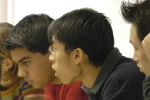
Imperial’s Centenary Year provides an opportunity to recognise and celebrate members of the Imperial community.
View staff and student portraits